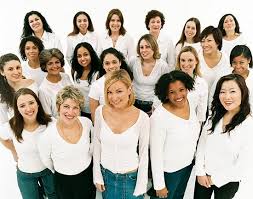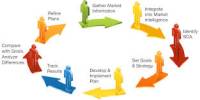Introduction
Women are marginalized and hold the poorer status both in economy and society. Women hold the poorer status than their male counterparts within their own family and society. They are the “poorest of the poor” This is true that unequal distribution in the labor market is a reason of women’s poorer status but not the prime reason. I think the prime reason is patriarchy which creates this unequal distribution. The socialization process also plays a role for molding ones attitude and notion.Many people think that men are superior to women and many women believe in this notion because of their socialization process. Again this socialization process is controlled by the patriarchy.
Conceptual framework
Before go through the thorough discussion about the selected topic we have to know about the keywords of this paper. Here the keywords are unequal distribution, income, labor market and poorer status.
Unequal distribution: usually unequal distribution means not to recourses in an ethical way or logical presses. It is quietly a type of discrimination. It is a process which deprived one from ones rights. Generally this unequal distribution is allotted for women. Women are provided with less education, training and payment which are economic factors. Also there exists gender division of labor which is another unequal distribution in job sectors.
Income: income is considered as recourse. It is the total amount of goods and services that a person receives and thus there is not necessarily money or cash involved. But in general it is considered that income should have monetary value. Housewives haven’t income as they do unpaid domestic work.
Labor market: usually labor market is a market where workers find paying works, employers find willing workers and where wage rates are determined. Labor market may be local or national or even international. Payment is a crucial point in the labor market. Economists excluded women from the lobar market who work within their own houses, do all types of domestic works like cleaning, washing, cooking, serving caring and rearing children. Now the feminists challenge the issue.
Poorer status: ‘Poorer’ is the comparative degree of the word ‘poor’. In almost every society in the world women hold poorer status than men in the context of economy and social value. Women are considered to be economically dependent on men and subordinated and subjugated.
Women and the labor market: The historical view
In the pre-industrial period there was no clear separation between work place and home. Nor was there a gendered separation between productive work and unproductive work. All works were seen as contributing to the maintenance of the household although some tasks were seen as men’s and some as women’s. However, with the industrial revolution in the 19th century, paid employment become separated from the home. Gradually men hold the position to do paid employment and women were excluded from paid employment. Women were confined within four-walls of their house and involved in unpaid domestic works, reproductive works which were not considered as productive work. So women had not have any contribution in national economy and they become poorer part of the nation as they had not income.
In the course of time, gradually female participation in the labor market was quite high. Working wives and mothers were regarded as unnatural, immoral and negligent home-makers and parents. They were also accused of taking work from men.
Most men saw working women as a threat to their own paid employment and status of bread-winners. They argued that there were only a limited amount of paid employment and women were allowed to work then some families would be felt without an income.
Consequently, it was argued that women should be exclueded from paid employment or confined to low-status, low paid jobs. The trade unions were dominated by men and were considered to protect men’s conditions and wages. Even when women did the same work as men they did not receive the same pay.
From this historical overview, we can easily understand that it is patriarchy which creates an obstacle for women to participate in the labor market and unequal distribution of income.
Women’s participation and inequality in labor market
Nowadays more and more women participate in the labor market. Numerous women work in lowly paid low-status jobs. Again some women have employed in higher-paid professional employment categories. While other women do not involve in paid work, they are only housewives.
In the informal sectors such as ready made garment sector, shrimp culture, frozen food industry or as daily labor women are paid less than men labor. Here the employers use women’s cheap labor to maximize their profit. Female workers get low payment because most of them are uneducated or receive little education; they are unskilled as they do not provide with any training. At first, girls receive unequal treatment from their family. The family of low income only sent their sons to the school but not their daughters and finally at the work-place they receive lower payment and are exploited because of their lacking in education. In these sectors women can not enjoy maternity leave though they are fired from the job because of pregnancy.
There exists occupational segregation in the labor market. Many jobs are highly gendered and they are seen as “women’s work” such as secretarial and caring jobs (nursing, teaching and medical profession), receptionists, telephone operators etc. again there used some masculine terminology such as businessman. This feminization of work back footed the women.
At present many women are involved in high professional jobs after having their graduation. In this sector they are allowed the maternity leave but they miss the training which is provided in that particular time.
The house wives who are not involved in paid work and have not any income, hardly have the decision making power. But why we do not think about the surplus value of their unpaid domestic work? Throughout the day women do the domestic work such as cooking, serving, cleaning, washing, caring and rearing child and maintaining the households. In maximum cases it is quite impossible to employ someone for these works as it demand for a good amount of money. If we consider the paid value of these labors the amount of the payment may be equal or higher than their husband income. If we could add this surplus value in GDP then it would be higher.
The unequal distribution of income and women’s status
There is no doubt that the unequal distribution of income in the labor market brings disadvantage for women. Though women workers have to do equal work with male workers, majority (62.5%) of them do not get equal wages.
Table: Equal wage and demand of women workers:
| Wage Types | Gender | Total | ||
Female | Male | |||
| Provide equal wages | 229 (32.7%) | 33 (4.7%) | 262 (37.4%) | |
| Does not provide equal wages | 377 (53.9%) | 61 (8.7%) | 438 (62.5%) | |
| Total | 606 (86.6%) | 94 (13.4%) | 700 (100%) | |
Source: Field survey, 2004
One’s living standard and consumer behavior depend on his/her income. If a woman earn and contribute in the family income equally with her husband she will gain the decision making power. If she earns more she will able to meet up her as well as her children’s nutrition demand.
Women are the “poorest of the poor”. According the UN statistics they work more than 60% of the working hours, earn only 10% of the world’s income and own less than 1% of the world property. In the narrow definition poverty is measured by the percentage of population having income below the minimum expenditure required for meeting the basic needs (Hye, 1996, p.4).
According to the border definition, poverty refers forms of economic, social and psychological deprivation occurring among people lacking sufficient ownership, control or access to resource’s to maintain or provide individual or collective minimum levels of living. As a result the ability to provide for minimum nutrition, health, education, shelter, security, leisure or other aspects of life is impaired. Poverty according to this definition also represents an exclusionary relation denoting the state of being excluded or denied access to a package of resources. The resource package includes both technical resources and social networks necessary to maintain survival (North-South Institute, 1985)
The prime reason of women’s poorer status
The prime reason of women’s poorer status is the patriarchy; not the unequal distribution if income in the labor market because this unequal distribution is created by the patriarchy for the benefit of men.
Nowadays many highly educated women hold position in top categories such as administrators, layers, doctors, engineers, university teachers, and pilots and so on. In these profession women hardly face the unequal distribution of income. Sometimes they earn more than their male counterpart. But what is the actual condition of these women? Are they truly empowered? Are they holding an independent or honorable status in their family or society? Are they happy in their personal or conjugal life? To understand the condition and status of these of these top-professional women in their family and society here I mention two case studies.
Case study 1: Parvin Akhter (40) is the only child of her rich parents. She is highly educated, good looking women and holds a higher position in a private office. She got married at the age of 22 and divorced at 37. She has a daughter and a son. Her ex-husband Mizan worked in a renowned foreign company. Suddenly that company stopped their activities in Bangladesh and Mizan lost his job. After that Mizan joined in another private company but the new job was not as good as the previous one. Because of the maintenances of the family Pervin join in a private job. With in a few years Pervin seated the highest post of the institution as she was very sincere and honest about her duty. When she gain higher status in her job and were paid more then Mizan, he became jealous and complained that Pervin did not pay enough attention to her children. Mizan said that Pervin had to resign from her job and stay at home. Pervin tried her best to convince Mizan but she failed. Mizan was rigid on his decision. At last Pervin divorced Mizan on her own responsibility. Now she lives with her daughter and son (Hosain and Begum, p.97-99).
Case study 2: Mehar Nigar (30) graduated from the University of Dhaka and after her graduation she got married at the age of 25.After her marriage husband Zainul Abedin went to abroad for higher education and Mehar stayed with her in-laws. In the meantime she got a good job in a NGO. Mehar send of her salary to her father and spent the other half for in-laws house. Zainul returned home after two years. He and her family members did not allow Mehar to send money for her family. But Mehar consider it as her duty because her family invested for her education. Mehar’s father is a retired school master and she has a younger sister and brother who are students. So she could not stop to send money for her family. In this situation Zainul shut with her from time to time and there keep mental distance between them. Now Mehar and Zainul are separated(Hosain and Begum,p.99-102).
Analysis: From the above cases we see that women are not only the victims of unequal distribution of resources, facilities and incomes. They have a marginalized position in this patriarchal society. Nowadays the majority of upper class and middle class families do not create discrimination between their daughter and son in the purpose of food, nutrition, health care and education. In these families the girls and boys have the equal access to education and job sectors. Women who are graduated from renowned universities and establish their own carrier are faced different types of problem from their husband or in-laws.
Here in the first case study Pervin was forced to dismiss her marital life as her husband could not take it easy that she earn more than him. Patriarchy moulds Mizan’s attitude in such a way that he cannot think about that his wife can hold better position in job sector than him. Also the patriarchal notion embedded in his mind set that women should be dependent, subordinate and subjugate. So that here raised an ego conflict. But Pervin joined in her job to fulfill the demand of her family when the family was in a crisis. It is patriarchy which allows women to involve in paid work and forces them to rejects the job according to its need.
In the second case study we see that Mehar continuously struggles to establish control over her own earning. Patriarchy does not want that women have the control over her own resource. She can earn and contribute to her family but she have to invest her resources according to her husband. There exists a notion that after marriage a women lost her rights from her father’s house and she have not any duty to her parents. Parents invest resources for both of their daughter’s and son’s educational to fulfill other needs. So after having the graduationwhen they go to their job sectors both the daughter and son have the duty towards their own parents. But the patriarchy do not allow the daughters to provide financial support to their parents. Husband and their family members think that wife should have spend all her resources and incomes for the betterment of their family and the wife has not the right to give financial support to her own family.
From the above analysis we can easily understand that patriarchy is responsible for the women’s poorer status in economics and society. Again I want to mention here the socialization process. Every individual have to go through this process which has a vital impact on forming one’s perception, notion, norms and values. This socialization process is also controlled by patriarchy.
Own view
I think that the prime reason of women’s poorer status is the existence of patriarchy but not the unequal distribution of income in the labor market. Actually it is patriarchy which provides all types of unequal distribution and discrimination to women. In the lower class family a girl do not allow to get the equal access of food, nutrition, health care and education facilities. In the upper class or middle class family though she gets these facilities, here raise an obstacle to her higher degree or carrier. Patriarchy do not allow her control over own resources. Again women are discriminated inheritance rights in the customary law. The socialization process under patriarchal social system helps the people to be narrow minded.
Recommendations
- Patriarchal discourse should be broken down to create a better world for the man kind.
- Gender-sensitive syllabus should be included in the education system as the sense of mutual respect develops both in the young boy and girls.
- Gender-friendly atmosphere should be created within the family, work place and society.
- Gender-sensitive training should be provided in all types of occupation.
- All types of inequality and discrimination against women should be eradicated from the family and society.
- Women should be confident, conscious about their rights and they have the sense of self-respect.
Conclusion
Women consist half of the population in the world as well as in our country. If they remain back footed a nation will not be able to achieve success. Women should be included in the main stream economy. For a developing country like Bangladesh it is quite impossible to gain ecologic growth without considering women as “women power”. Now it is the time for challenging the concept of “man power”.For the masculine terminology man power we can say that it is patriarchy which control the discipline of economics. Patriarchy makes women “poorest of the poor”. Women are the poorest not only in the context of economics but also in the context of social value.
References
- Hosain, S. K. and Begum, D. (1999). Marriage, divorce and women’s rights. Dhaka: Women for Women.
- Hye, H. A. (1996). Below the line. Dhaka: UPL.
- A survey report on Condition of working women of informer sectors in Bangladesh (2004), Karmojibi Nari.
















